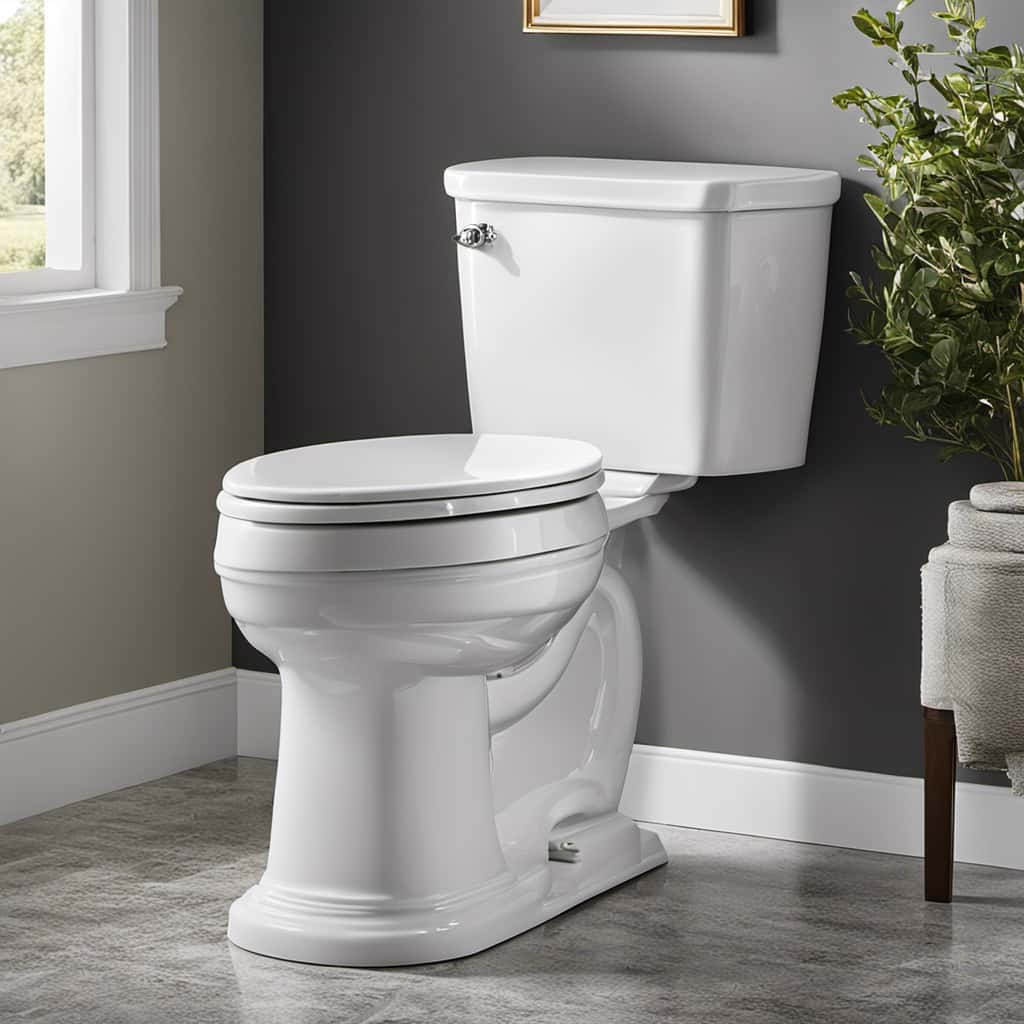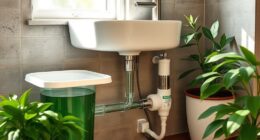Ladies and gentlemen, prepare to be amazed by the wonders of contemporary hygiene! This piece will delve into the intriguing universe of toilets.
From the flush toilets that whisk away our waste with a mighty whoosh, to the eco-friendly composting toilets that turn our droppings into valuable fertilizer, and the humble squat toilets that have been used for centuries in many parts of the world.
So, buckle up, dear readers, as we embark on a journey to uncover the diverse and ingenious types of toilets that exist across the globe.
Key Takeaways
- Flush toilets are a common fixture in households worldwide and have evolved over time with water-saving technologies and advancements like dual-flush and pressure-assisted flushing.
- Composting toilets are a sustainable and eco-friendly alternative that convert human waste into nutrient-rich compost, reducing the need for chemical-based fertilizers.
- Squat toilets, commonly found in parts of Asia, Africa, and the Middle East, promote better bowel movements and hygiene but can be challenging for individuals with mobility issues.
- Bidets offer a hygienic alternative to toilet paper, reduce the risk of infection, and provide a cleaner and more refreshing experience by using a water spray for personal hygiene.
Flush Toilets
Flush toilets are a common fixture in households worldwide. These toilets utilize water-saving technologies to efficiently remove waste from the bowl.

The historical development of flush toilets can be traced back to ancient civilizations such as the Indus Valley and ancient Rome, where sophisticated sewage systems were in place.
In modern times, flush toilets have undergone significant advancements to improve their water efficiency. Dual-flush toilets, for example, offer two flushing options—low volume for liquid waste and high volume for solid waste. Additionally, some flush toilets have incorporated features like pressure-assisted flushing, which uses air pressure to enhance the flushing power while reducing water consumption.
With these advancements, flush toilets have become more eco-friendly and sustainable.
Moving forward, let’s explore another type of toilet—the composting toilet—that offers unique benefits in waste management.

Composting Toilets
Moving on from the previous subtopic, we’ll now delve into composting toilets and their unique benefits in waste management.
Composting toilets are a sustainable and eco-friendly alternative to traditional flush toilets. One of the key benefits of composting toilets is their ability to convert human waste into nutrient-rich compost. This compost can then be used as a natural fertilizer, reducing the need for chemical-based fertilizers and promoting soil health.
In addition to their environmental advantages, composting toilets also require minimal maintenance. Regularly adding a carbon-rich material, such as sawdust or coconut coir, helps to aid the decomposition process and control odor. Periodic emptying and turning of the compost pile ensure optimal conditions for decomposition.
Squat Toilets
Continuing our exploration of toilets, let’s now turn our attention to squat toilets, which offer a different approach to waste disposal.

Squat toilets, also known as Asian toilets or Turkish toilets, are commonly found in many parts of Asia, Africa, and the Middle East. Unlike Western-style toilets, squat toilets require the user to squat or crouch down while using them.
There are pros and cons to using squat toilets. On the positive side, squatting can promote better bowel movements and reduce the risk of hemorrhoids. Squat toilets also tend to be more hygienic, as there’s no direct contact with the seat. Additionally, squat toilets are often more water-efficient than Western-style toilets. However, they can be challenging for individuals with mobility issues or those unaccustomed to this type of toilet.
Now that we’ve explored squat toilets, let’s move on to the next section about bidets, which offer another innovative approach to personal hygiene.
Bidets
Let’s explore the different types of bidets available around the world. Bidets are a popular bathroom fixture that offers a hygienic and refreshing alternative to traditional toilet paper. There are various types of bidet attachments that can be installed on existing toilets, such as handheld bidet sprayers, bidet seats, and bidet toilet combos.

One of the benefits of using bidets is improved cleanliness. Bidets provide a thorough cleaning experience by using water to cleanse the genital and anal areas. This can help reduce the risk of infection and promote better personal hygiene. Additionally, bidets are environmentally friendly as they eliminate the need for excessive toilet paper usage.
In the next section, we’ll discuss another type of toilet known as portable toilets, which are commonly used in outdoor events and construction sites.
Portable Toilets
Portable toilets, also known as porta-potties, are commonly used in outdoor events and construction sites to provide convenient access to restroom facilities. They offer several benefits and must comply with sanitation regulations to ensure proper hygiene.
Sanitation regulations for portable toilets govern the cleanliness and maintenance of these units. They require regular servicing, proper waste disposal, and the use of disinfectants to prevent the spread of germs and diseases.

Using portable toilets at outdoor events has several advantages. They provide a convenient and hygienic solution for attendees, eliminating the need for long queues or searching for public restrooms. Additionally, they help maintain cleanliness and prevent damage to surrounding areas by keeping the event grounds free from human waste.
Portable toilets are designed to improve convenience and accessibility. They are often equipped with handrails, wider entryways, and spacious interiors to accommodate wheelchair users, ensuring that all attendees can enjoy the event without facing any accessibility challenges.
Frequently Asked Questions
Are There Any Health Risks Associated With Using Different Types of Toilets?
There can be health risks associated with different types of toilets due to varying hygiene practices. It’s important to understand these risks and take necessary precautions for maintaining good hygiene and preventing infections.
How Do Different Types of Toilets Impact the Environment?
Different types of toilets have varying impacts on sanitation and water consumption. It is important to consider the environmental consequences when choosing a toilet system. Factors such as water usage and waste management greatly influence the overall environmental impact.

Can Bidets Be Installed in Existing Bathrooms Without Any Major Modifications?
Yes, bidets can be installed in existing bathrooms without major modifications. While some models may require additional plumbing connections or electrical work, most bidets can be easily integrated into the existing toilet setup.
Are There Any Cultural Practices or Customs Associated With Squat Toilets?
Cultural practices associated with squat toilets vary worldwide. In some Asian countries, squatting is considered more hygienic and natural than sitting. Hygiene considerations include proper foot placement and the use of water for cleaning.
What Are the Maintenance Requirements for Portable Toilets?
When it comes to portable toilets, we need to consider cleaning and sanitization, as well as waste disposal and management. These maintenance requirements ensure a hygienic and efficient system for users.
Conclusion
In conclusion, the world of toilets is vast and diverse, offering a range of options to suit different preferences and cultural practices.

From the efficient flush toilets found in most modern homes, to the eco-friendly composting toilets that promote sustainability, and the practicality of bidets and portable toilets, there’s a toilet for every need.
So, next time you step into a restroom, remember the variety of toilets that exist, each serving their unique purpose in keeping our world clean and sanitary.










